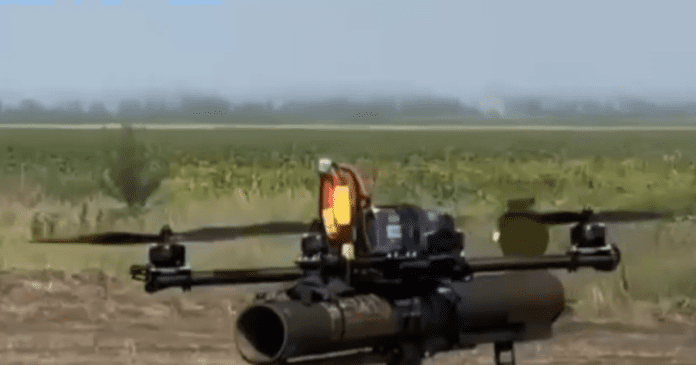This post is also available in:
 עברית (Hebrew)
עברית (Hebrew)
Ukraine has taken a significant step forward in the ongoing conflict with Russia by repurposing quadcopter drones to fire Soviet-era RPG-18 Mukha anti-tank missiles. This adaptation aims to offer a cost-effective solution for targeting Russian tanks, infantry fighting vehicles, and howitzers.
The RPG-18 Mukha is a Soviet-designed short-range, disposable anti-tank missile launcher, comparable to the US M72-series LAW. It fires a 64 mm PG-18 HEAT warhead, capable of penetrating up to 375 mm of conventional armor. However, its effectiveness is reduced against targets with explosive reactive armor (ERA) or composite armor. The RPG-18 is designed for short-range engagements, with a maximum effective range of 200 meters. Its warhead self-destructs six seconds after launch, limiting its utility for longer-range targets.
Recently, a video shared on social media revealed Ukraine’s testing of this anti-tank unmanned aerial vehicle (UAV). The drone, equipped with a 2.6 kg RPG-18 Mukha launcher, successfully demonstrated its capabilities during the test. Despite this progress, Ukraine may face challenges with long-range operations due to the weight of the RPG-18 launcher.
Ukraine’s new UAV is fitted with a state-of-the-art guidance system and a high-resolution nano camera, enhancing its precision and effectiveness in targeting Russian positions. The drone’s ability to operate from higher elevations could prove advantageous for short-range operations.
This development adds to Ukraine’s track record of innovative drone technologies. Recently, Ukrainian President Volodymyr Zelenskyy unveiled the “Palianytsia,” a domestically developed long-range drone missile, showcasing Ukraine’s rapid advancements in drone warfare.
As Ukraine continues to refine its drone technologies, the adaptation of Soviet-era weapons to modern UAVs represents a significant step in its strategic efforts to counter Russian military capabilities.


























